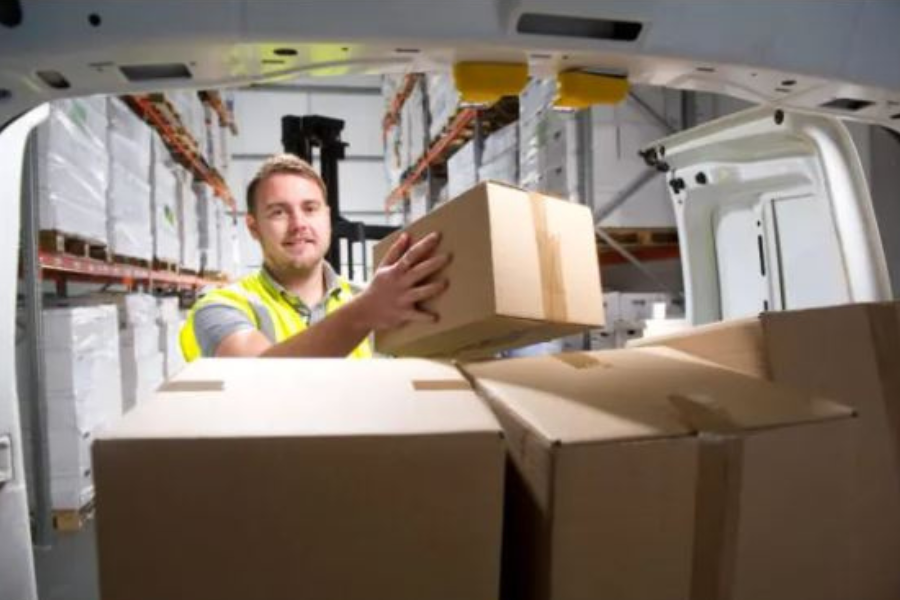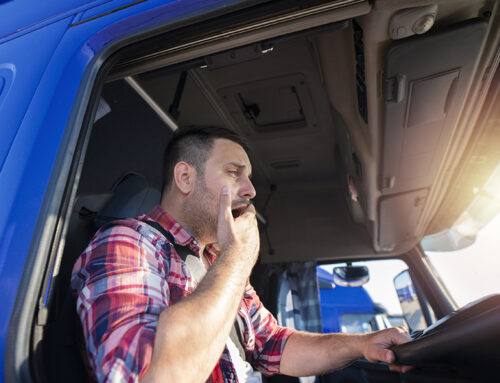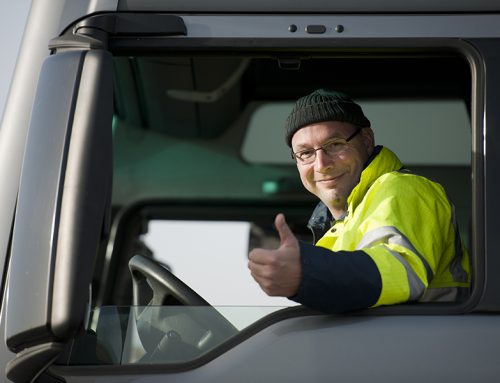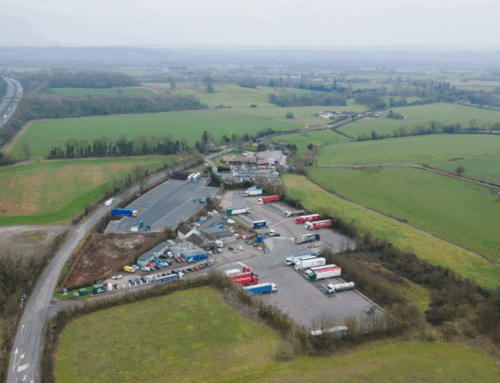Safe loading – a legal update
Updated 28th February 2025
This safe loading legal update is brought to you by Mike Hayward, Partner, Road Transport, Crime & Regulatory at Woodfines.
There are many law enforcement procedures relating to the safe loading of your vehicles, and it’s important to note that policy and law are there to keep you and those around you safe. The following article is an insight to help drivers, operators, fleet managers and those involved in loading vehicles.
Securing a load – whose responsibility?
If an offence is committed, it is not only an offence committed by the person driving that vehicle, but also by anyone who causes or permits this to take place.
For example, a fleet manager or employer permitting a vehicle to go out on the road with an unsafe load could result in the business also being prosecuted based on:
- The condition of the motor vehicle or trailer or its accessories or equipment; or
- The purpose for which it is used; or
- The number of passengers carried by it, or the how they are carried; or
- The weight, position or distribution of its load, or how it is secured.
The law is a catch-all for any form of situation involving a motor vehicle or trailer that could be seen by law enforcement (the Police, the Driver and Vehicle Standards Agency (DVSA) or the Health and Safety Executive) as a danger, or likely to cause injury to any person. Importantly, they don’t have to show that injury was caused, but that it poses a risk.
What are the penalties?
Penalty points and a fine for the driver can follow, as well as an unlimited fine for the Company – however, you should not just adopt your road vehicle policy to avoid the penalties or fines.
The consequences of a vehicle being dangerously loaded could lead to a serious incident, leading to an investigation into dangerous driving or causing serious injury or death by careless or dangerous driving. It is not then a case of dealing with fines or penalty points, but instead, a risk of a custodial sentence.
So it’s not just about potential convictions and penalties, but about keeping other road users safe and not being involved in an incident, avoidable injury or death case that has unimaginable consequences for all involved.
Who can prosecute?
It’s not just the Police or DVSA that can bring a prosecution. The Health and Safety Executive may look at the way that a safe loading policy is put in place under regulations contained in the Health and Safety at Work Act.
There can also be further impact if, for example, a part of a load falls into water and causes pollution, in which case a company may also be prosecuted under separate legislation.
Safe loading – scaremongering?
The above summary refers to the very serious consequences that can result if proper systems are not followed. As businesses and drivers, you have a responsibility not only to yourselves but to any other road users – or indeed anyone that may be at your loading site. You should ensure that any vehicle that is being used in your business is lawful at all times, so making sure that it is correctly and safely loaded is paramount.
However, an investigation into a vehicle, especially if there are recurring stops, is almost inevitably going to be a trigger for additional law enforcement or regulatory bodies involvement.
If the DVSA were to identify a vehicle that was improperly and dangerously secured, then this may trigger further investigations into the operator regime, potentially leading to regulatory action being taken against the operator and/or driver in Public Inquiry or Driver Conduct Hearings. Such an encounter with the Police or DVSA would be reportable to the Traffic Commissioner and the consequences could be far reaching.
Dealing with criminal law can appear to be scaremongering, but safe policies and procedures in the workplace and for vehicles are central to showing that a business cares about its staff and their overall wellbeing.
Such policies and procedures may also reduce civil liability in the event of an incident.
Safe loading Policy
Every business should have a safe loading practice and policy in place and one that is bespoke to that business, specific to the nature and types of goods being moved, the vehicles being used and whether there are various types of goods that will be in transit.
A common sense approach
Securing loads may appear to be common sense, but ultimately anything that is loaded onto a vehicle has to be secured and steps must be taken to make sure nothing falls onto a road or causes any potential risk to other road users. For example:
• Any items being carried on the roof or roof racks need to be tied down at the front and the back as well as over the top.
• Anything carried at an angle over the headboard of the vehicle such as pipes or boarding should be loop lashed. This is where a rachet strap is looped around the load before being fastened at each side of the vehicle.
• It is essential that a vehicle is not overloaded or that if you are carrying lots of different shapes, sizes and weights of items, heavier items are placed on the bottom and lighter items on top.
• Top heavy vehicles or where a vehicle may be leaning too much on one side – it is recommended that items are loaded up to a bulkhead, if possible, to stop items sliding forward.
• With vehicles that have curtain sides, the items have to be strapped down securely inside the vehicle and/or trailer.
Take a look at the Code of Practice for the safety of loads on vehicles issued by the Department for Transport.
We would recommend that any fleet manager and/or driver assess this guide and refer to the requirements.
The Code of Practice gives guidance concerning different types of vehicles and items being moved, ranging from the movement of timber and loose bricks to boxes and hay bales. The overriding objective is that safe loading rules and regulations are there to protect not just those involved in driving those vehicles but also in loading and unloading the vehicle.
Safe loading – education and training are key
Anyone involved in your supply chain under your instruction should be given requisite training and management should look at carrying out regular risk assessments, many of which are widely available from the Health and Safety Executive.
Ultimately, no business wants to be involved in an incident where injury is caused, but equally they do not want to face their vehicles being prohibited for use because of the way that their load was unsafely secured.
Over 20,000 road impact incidents have occurred on an annual basis by objects falling from vehicles. The danger of any item falling from a vehicle is obvious, and clearly the risk of injury or death, the delays caused on the road network, and inevitable damage to goods in transit is clear for all to understand.
Above all, you should ensure that load security policies and systems you use are appropriate for:
a. The loads being carried; and
b. The vehicles being used.
As a business, it’s healthy to encourage communication between your drivers, loaders, and those involved in your entire supply chain. If a driver feels that they are collecting goods that are overweight or cannot be properly secured in the vehicles being used, then you would want them to relay that, so that the correct vehicle type or improved restraint methods are utilised.
You should ensure that your drivers are clear about:
a. The loads they carry;
b. How to unload those goods; and
c. What they should do if the load shifts in transit.
Everyone involved in that loading process “loading plan” should be provided with the necessary training.
You should carry out regular risk assessments to identify issues and potential risks.
You should know who is responsible during that loading process at the loading, driving transit and unloading points.
If you are carrying out regular drops to any site, establish who is going to be responsible for the unloading at that time, and how that supervision has taken place.
The Health and Safety Executive guidance can be accessed here.
Safe loading responsibilities – not just a policy
The key tip to take from this is to use the guidance, law, and recommendations to best suit your business type.
It is not enough to simply have all of these policies in a centralised folder that is not easy to navigate, or irrelevant to your business operation. Consider the contents and, with advice from a health and safety, road risk, or legal consultant, take all reasonable steps to have a policy that is meaningful and relevant to your business.
Do not look at rules, regulations, and laws, as a stick for enforcement to beat you with, but use them as a way of showing your staff in all parts of the supply chain, that you are caring about their welfare and doing all you can to prevent there being any incident and/or penalty that can have far-reaching consequences on your staff and also your business.
Use those practices to improve your overall business offering and in turn that should create a more positive working environment where your business can demonstrate your commitment to safety.
Mike Hayward and his team act for business and individuals in motoring matters and a full range of health and safety and criminal cases.






